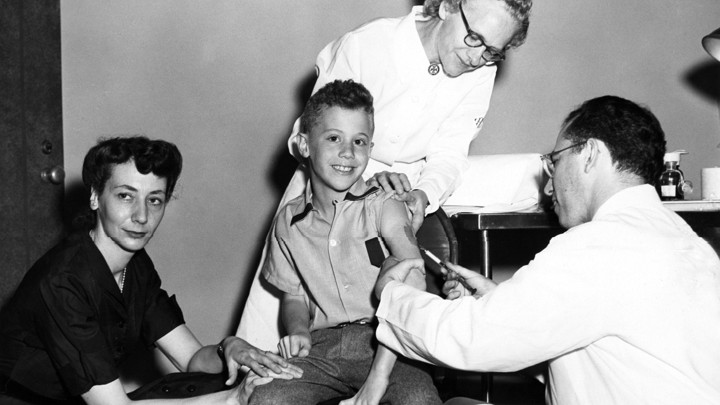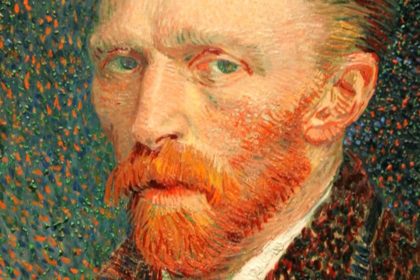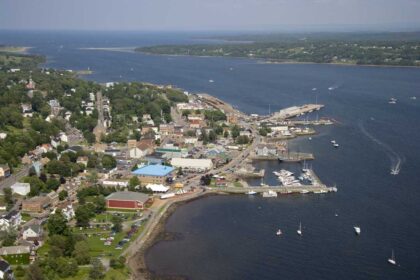Jonas Edward Salk was an American medical researcher and virologist. He discovered and developed one of the first successful polio vaccines. Born in New York City, he attended New York University School of Medicine, later choosing to do medical research instead of becoming a practicing physician. Take a look below for 30 more interesting and awesome facts about Jonas Salk.
1. In 1939, after earning his medical degree, Salk began an internship as a physician scientist at Mount Sinai Hospital.
2. Two years after his internship, he was granted a fellowship at the University of Michigan, where he would study fly viruses with his mentor Thomas Francis, Jr.
3. Until 1955, when the Salk vaccine was introduced, polio was considered one of the most frightening public health problems in the world. In the postwar United States, annual epidemics were increasingly devastating.
4. In 1947, Salk accepted an appointment to the University of Pittsburgh School of Medicine.
5. In 1948, he undertook a project funded by the National Foundation for Infantile Paralysis to determine the number of different types of polio virus.
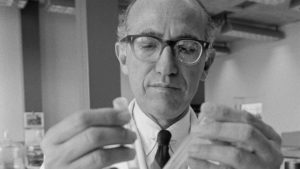
6. Salk saw an opportunity to extend this project towards developing a vaccine against polio, and, together with the skilled research team he assembled, devoted himself to this work for the next seven years.
7. The field travel set up to test the Salk vaccine was, according to historian William L. O’Neill, “the most elaborate program of its kind in history, involving 20,000 physicians and public health officers, 64,000 school personnel, and 220,000 volunteers.”
8. Over 1,800,000 school children took part in Salk’s trial.
9. When news of the vaccine’s success was made public on April 12, 1955, Salk was hailed as a “miracle worker” and the day almost became a national holiday.
10. Around the world, an immediate rush to vaccinate began, with countries including Canada, Sweden, Denmark, Norway, West Germany, the Netherlands, Switzerland and Belgium planning to begin polio immunization campaigns using Salk’s vaccine.
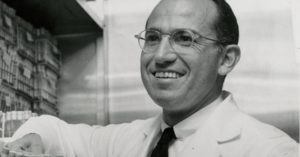
11. Salk campaigned for mandatory vaccination, claiming that public health should be considered a “moral commitment.”
12. His sole focus had been to develop a safe and effective vaccine as rapidly as possible, with no interest in personal profit.
13. When asked who owned the patent to his vaccine, Salk said, “Well, the people I would say. There is no patent. Could you patent the sun?”
14. In 1960, he founded the Salk Institute for Biological Studies in La Jolla, California, which is today a center for medical and scientific research.
15. He continued to conduct research and publish books, including Man Unfolding, The Survival of the Wisest, World Population and Human Values: A New Reality, and Anatomy of Reality: Merging of Intuition and Reason.
16. Salk’s last years were spent searching for a vaccine against HIV.
17. His personal papers are stored at the University of California, San Diego Library.
18. Salk was born in New York City and was the eldest of three sons born to Jewish immigrants, Daniel and Dora Salk.
19. In 1927, Salk entered Townsend Harris High School which was a public high school for gifted students. The competition was stiff but most of those who made it through the rigorous courses could have the grades to enter City College of New York.
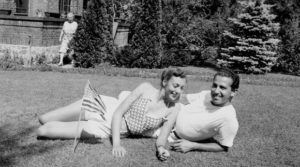
20. Despite a shortage of first rate laboratories and libraries, during the 1930s and 1940s, City College of New York graduated eight future Nobel Prize winners and more PhD recipients than any other university, except the University of California, Berkeley.
21. Salk entered New York University to study medicine because the tuition was low and most of the other medical schools had rigid quotas for Jews.
22. In 1941, he accepted a two month research position at the University of Michigan, where he worked in the virology lab with Dr. Thomas Francis. Francis had discovered the type B influenza virus but was embroiled in a controversy after it was discovered that he deliberately infected patients in Michigan mental hospitals with influenza.
23. Francis secured a research grant for Salk from the U.S. Army to work on developing an influenza vaccine and he and Francis perfect a vaccine that was widely used by the army.
24. The day after his graduation from medical school in 1939, Salk married Donna Lindsay, a master’s candidate at the New York College of Social Work.
25. David Oshinsky writes that Donna’s father, Elmer Lindsay, “a wealthy Manhattan dentist, viewed Salk as a social inferior, several cuts below Donna’s former suitors.” Eventually, her father agreed to the marriage on two conditions: first, Salk must wait until he could be listed as an official M.D. on the wedding invitations, and second, he must improve his “rather pedestrian status” by giving himself a middle name.”
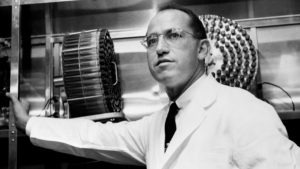
26. Salk and Lindsay had three children: Peter, Darrell and Jonathan Salk. However, in 1968, they divorced.
27. In 1970, Salk married French painter Francoise Gilot, the former mistress of artist Pablo Picasso.
28. Jonas Salk died from heart failure at the age of 80 on June 23, 1995, in La Jolla, and was buried at El Camino Memorial Park in San Diego.
29. Prior to his death, Salk was working on a new book along the theme of “biophilosophy,” privately reported to be titled Millennium of the Mind.
30. His definition of a “biophilosopher” is, “Someone who draws upon the scriptures of nature, recognizing that we are the product of the process of evolution, and understands that we have become the process itself, through the emergence and evolution of our consciousness, our awareness, our capacity to imagine and anticipate the future, and to choose from among alternatives.”

